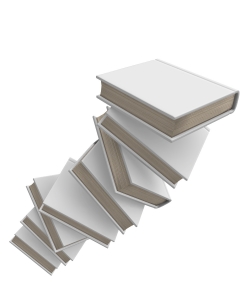Concentration Help
for Dyslexic Students
Concentration help for dyslexic students can be provided in a number of different ways. Essentially it's all about making the information memorable and easy to take in. The way you present the material is key to teaching dyslexic people successfully.

Lesson structure:
It’s essential to make the class content easy to digest.
For example:
Let's say you want to cover the topic of Henry VIII’s six wives. This topic needs to be covered over two, one and a half hour, lessons. Obviously this means you have to cover three wives in each lesson.
Concentration help tips:
- When writing on the board use a different coloured pen for each wife.
- Use pictures of the wives to make them more distinctive and visually memorable.
- Make bullet points of the wives' distinctive qualities.
- When finished sum up the most memorable points of each wife, and use them to build the context of her character.
You want to present small punchy pieces of
information that are easy to mentally digest. Then build these pieces up into a complete structure of each wives' character. Don't ramble it's important to have sharp and memorable ideas.
Confusion makes the mind wonder:
A dyslexic person may have no trouble following along if they are interested in the material. However this can quickly change if they do not understand a particular point.
This can be an irritation, and spark a feeling of confusion. Once this happens the whole thread of information may be discarded and the student will start daydreaming.
It is therefore so important to explain complicated points in a number of different ways.
- Start with a very basic example.
- Then add a couple more that are a little more complex.
This will give them a stronger conception of the ideas you are trying to communicate.

Singular forms of communication lead to lack of attention:
If you focus too much on one form of communication you are very likely to lose the interest of your dyslexic students. It's hard to maintain concentration on someone just talking for a long period of time.
This is why it is so important to communicate with students in a number of different ways. This will make your lessons more distinctive and memorable.
- Try using funny pictures to emphasise the main points.
- Show students props or objects that illustrate the subject.
- Use videos to complement your teaching.
Keep it interesting:
Always try to assess the information you are presenting to students. Ask yourself is there a more interesting way of disseminating this material.
For example:
If you are teaching your students about whales watching a video will be the most interesting and memorable way for them to learn. Seeing the whales in action will be much more interesting than listening to you talk about them.
It's more interesting in context:
Can you make something more interesting by putting it into context?
For example:
The great fire of London tore through the city in 1666, but how did it effect the people? The crime rate would have gone up, and the poor would have suffered the most.
If you can present the information in an exciting, scary or dramatic way it will make it so much more memorable. Click here for more dyslexia teaching help.
Conclusion:
Awareness that most dyslexic people need some form of concentration help is essential when teaching them. You need to bring the information to life to make it distinct and memorable.